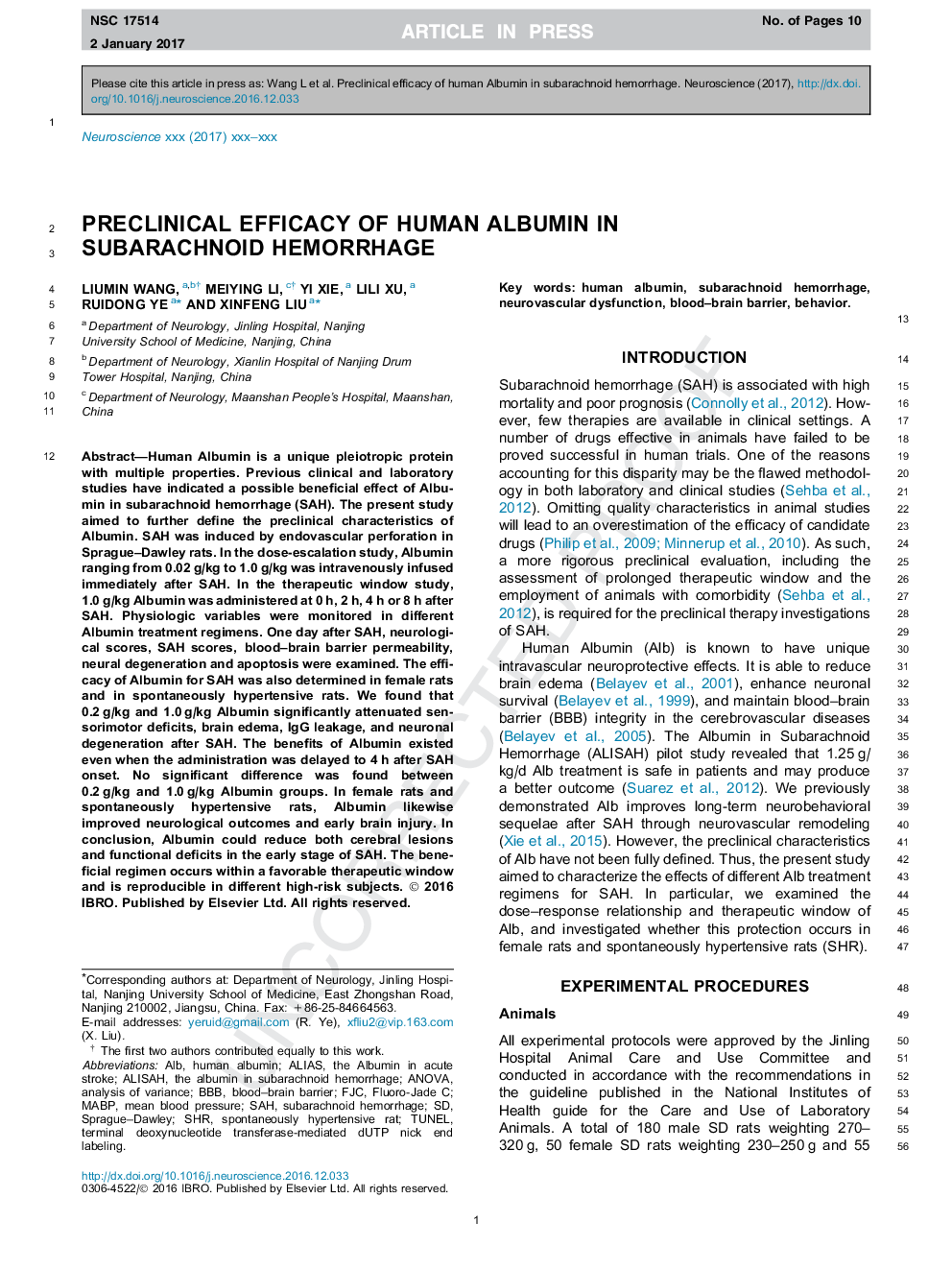| کد مقاله | کد نشریه | سال انتشار | مقاله انگلیسی | نسخه تمام متن |
|---|---|---|---|---|
| 5737762 | 1614732 | 2017 | 10 صفحه PDF | دانلود رایگان |
عنوان انگلیسی مقاله ISI
Preclinical efficacy of human Albumin in subarachnoid hemorrhage
ترجمه فارسی عنوان
کارآزمایی بالینی آلبومین انسان در خونریزی سوبارارونوئید
دانلود مقاله + سفارش ترجمه
دانلود مقاله ISI انگلیسی
رایگان برای ایرانیان
کلمات کلیدی
AliasFJCALBFluoro-Jade CSAHMABPhuman albumin - آلبومین انسانیSprague–Dawley - اسپراگ داولیanalysis of variance - تحلیل واریانسANOVA - تحلیل واریانس Analysis of varianceTUNEL - تونلSpontaneously Hypertensive Rat - خودآزمایی موش بالینیSubarachnoid hemorrhage - خونریزی زیر عنکبوتیهBehavior - رفتارBlood–brain barrier - سد خونی مغزیBBB - سد خونی مغزیShr - شریmean blood pressure - فشار خون متوسط است
موضوعات مرتبط
علوم زیستی و بیوفناوری
علم عصب شناسی
علوم اعصاب (عمومی)
چکیده انگلیسی
Human Albumin is a unique pleiotropic protein with multiple properties. Previous clinical and laboratory studies have indicated a possible beneficial effect of Albumin in subarachnoid hemorrhage (SAH). The present study aimed to further define the preclinical characteristics of Albumin. SAH was induced by endovascular perforation in Sprague-Dawley rats. In the dose-escalation study, Albumin ranging from 0.02Â g/kg to 1.0Â g/kg was intravenously infused immediately after SAH. In the therapeutic window study, 1.0Â g/kg Albumin was administered at 0Â h, 2Â h, 4Â h or 8Â h after SAH. Physiologic variables were monitored in different Albumin treatment regimens. One day after SAH, neurological scores, SAH scores, blood-brain barrier permeability, neural degeneration and apoptosis were examined. The efficacy of Albumin for SAH was also determined in female rats and in spontaneously hypertensive rats. We found that 0.2Â g/kg and 1.0Â g/kg Albumin significantly attenuated sensorimotor deficits, brain edema, IgG leakage, and neuronal degeneration after SAH. The benefits of Albumin existed even when the administration was delayed to 4Â h after SAH onset. No significant difference was found between 0.2Â g/kg and 1.0Â g/kg Albumin groups. In female rats and spontaneously hypertensive rats, Albumin likewise improved neurological outcomes and early brain injury. In conclusion, Albumin could reduce both cerebral lesions and functional deficits in the early stage of SAH. The beneficial regimen occurs within a favorable therapeutic window and is reproducible in different high-risk subjects.
ناشر
Database: Elsevier - ScienceDirect (ساینس دایرکت)
Journal: Neuroscience - Volume 344, 6 March 2017, Pages 255-264
Journal: Neuroscience - Volume 344, 6 March 2017, Pages 255-264
نویسندگان
Liumin Wang, Meiying Li, Yi Xie, Lili Xu, Ruidong Ye, Xinfeng Liu,
